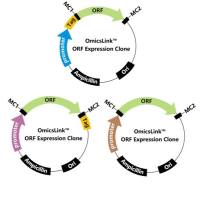Forward Genetic Screens in Xenopus Using Transposon-Mediated Insertional Mutagenesis
互联网
692
The class II DNA “cut-and-paste” transposons have been used to efficiently modify the Xenopus genome for transgenesis applications. Once integrated, the transposon is an effective substrate for excision and re-integration (remobilization) elsewhere in the genome by simply supplying the transposase enzyme in trans . We have used two methods to remobilize transposons resident in the frog genome: micro-injection of transposase mRNA at the one-cell stage and expression of the enzyme in the germline from a transgene. Double-transgenic frogs (hoppers) that harbor transgenes for both the substrate transposon and the transposase enzyme are outcrossed to wild-type animals and the progeny are scored for changes in reporter gene expression. Although both methods work effectively to remobilize transposons, the breeding-mediated strategy eliminates the time-consuming micro-injection step; novel integration events are produced by simply outcrossing the hopper frogs. As each outcross of Xenopus tropicalis typically produces 2,000, or more, progeny, this method can be used to perform large-scale insertional mutagenesis screens in this highly tractable developmental model system.









